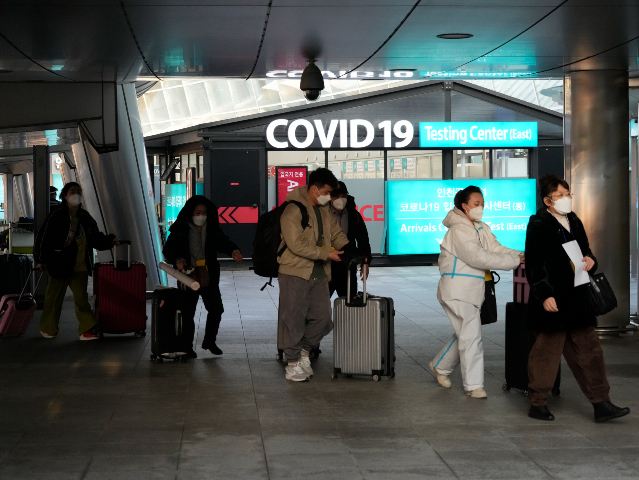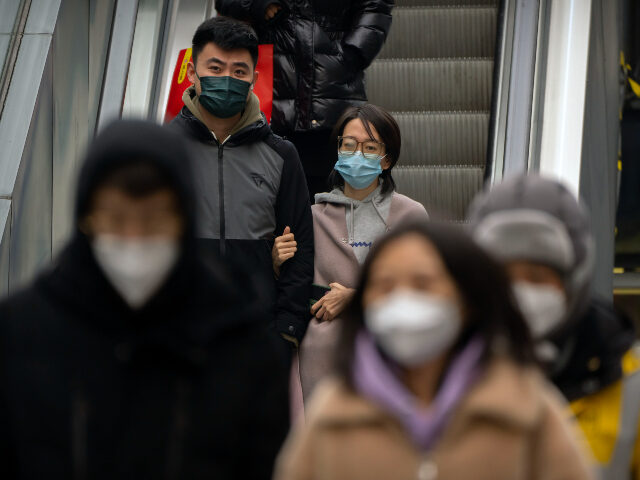Chinese officials on Tuesday confidently assured a nervous global audience that the “peak” of the massive omicron outbreak has passed.
China has consistently lied about its number of cases and fatalities throughout the pandemic, and especially during the current outbreak, so there is little reason to believe this assertion – and if it is true, that was quite a “peak,” a veritable Mount Everest of infections, as one regional official quoted by the state-run Global Times admitted:
Henan provincial government revealed during a press briefing on Monday that the COVID-19 infection rate in the province was about 89 percent overall, 89.1 percent in urban areas and 88.9 percent in rural areas, as of January 6.
Henan has passed the epidemic peak and operated in an orderly manner, while the number of new cases is expected to remain at a low level at the end of this month, local officials said. Health officials in Chongqing said the number of people receiving treatment at fever clinics fell sharply after December 20, with the municipality passing its peak between December 12 and December 23, 2022.
The number of daily infections in Sichuan Province is also declining with more than 80 percent of residents having been infected.
According to the Global Times, Chinese citizens are happily returning to “work and production” now that the worst is supposedly behind them. Top officials in Beijing decided to give that bubbly enthusiasm a little helping hand by mandating “human resource departments to resume holding on-site job fairs from Monday.”
At least one big job fair was held last weekend in Gansu Province, with 102 companies offering 11,367 jobs, which presumably drew quite a crowd. A lively job fair was also held on Sunday in Shanghai, plus a smaller one in Inner Mongolia.
The Global Times cited Chinese “experts” who casually dismissed the “relatively low” possibility of a second wave of omicron infections and mocked the very notion of other countries placing restrictions on Chinese travelers to contain the outbreak during the busy Lunar New Year travel season.
“The resumption of production and Spring Festival travel rush could mean transmission, but that will just be a small fluctuation rather than a new peak of infections,” one of those “experts” said.

Passengers arriving from China pass by a COVID-19 testing center at the Incheon International Airport In Incheon, South Korea, Tuesday, Jan. 10, 2023. Chinese embassies stopped issuing new visas for South Koreans and Japanese on Tuesday in apparent retaliation for COVID-19 measures recently imposed by those countries on travelers from China. (AP Photo/Ahn Young-joon)
The World Health Organization (W.H.O.) said on Wednesday that China is still withholding data and concealing the true number of coronavirus infections and deaths, creating some “very important information gaps” that W.H.O. technicians must work to fill.
South Korea also disputed China’s assertions. Korea Disease Control and Prevention Agency Deputy Director Choi Seung-ho said on Tuesday that some 80 percent of “imported coronavirus cases” in South Korea originated in China.
Choi said the number of infected Chinese travelers jumped 14 times between November and December. Increases in travelers from other countries were noted as well, but Choi stressed that China’s proximity to South Korea made its massive omicron outbreak a topic of special concern.
“China’s [coronavirus] situation is still worsening … which has created the possibility of new variants to be detected,” he told CNBC, directly contradicting China’s talk of passing peak infections.
South Korea and Japan both announced coronavirus testing requirements for Chinese travelers last week, roughly comparable to the testing requirements China has imposed on all foreign visitors since 2020. China retaliated by halting short-term visas for South Koreans and Japanese.
Japan and South Korea defended their travel policies on Wednesday and slammed China for attempting to punish them.
“The most important reason for our government’s measure is the lives and safety of our people. We will monitor the [Chinese coronavirus] situation in China before determining how long we will maintain our measures,” said South Korean Foreign Minister Park Jin.
Japanese Chief Cabinet Secretary Matsuno Hirokazu denounced China for “one-sidedly” restricting Japanese visas for “a reason that is not related to [Chinese coronavirus] measures.”
Matsuno said Japan will “respond appropriately while closely watching China’s infection situation and how information disclosures are handled by the Chinese side.”
South Korean health officials said on Wednesday that about 17 percent of short-term visitors from China tested positive for the coronavirus last week, while Japan said eight percent of all foreign passengers tested positive during the New Year week, most of them from China.

COMMENTS
Please let us know if you're having issues with commenting.